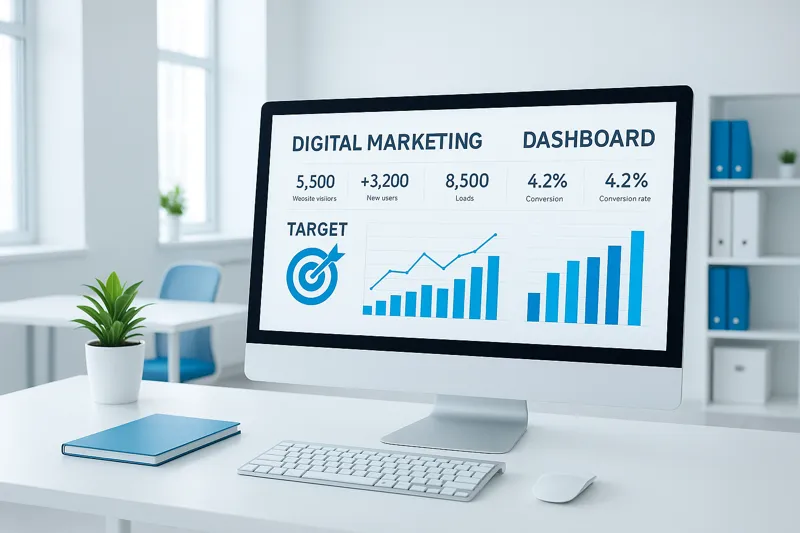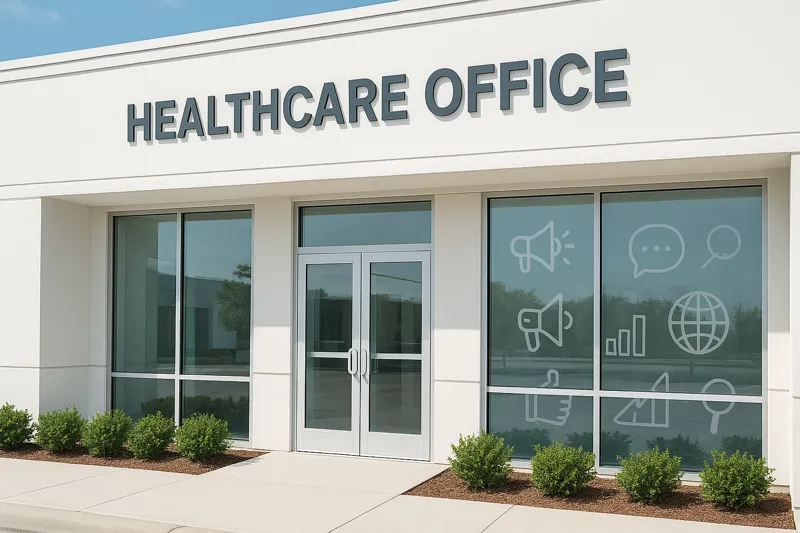Understanding the Digital Shift in Healthcare Engagement
The healthcare sector is undergoing a profound transformation driven by digital marketing innovations that enhance patient engagement. As the industry's footprint rapidly expands with increasing demands for more personalized, accessible, and effective health communication, providers are embracing digital tools to foster trusted patient relationships and improve health outcomes. This article explores the pioneering digital marketing strategies that are redefining patient engagement in healthcare and the vital role of technology in shaping patient-centric care today.
The Imperative of Digital Presence in Patient Engagement
Why is digital presence critical for patient engagement?
A strong digital presence is vital in today’s healthcare environment. With 77% of patients researching online before scheduling an appointment, healthcare providers must ensure their information is easily accessible and engaging. Search engines drive three times more visitors to hospital websites than other sources, highlighting the need for optimized digital content. Local search optimization helps patients find nearby providers quickly, and mobile-first website design caters to the majority who access healthcare information via smartphones. Together, these strategies enhance patient decision-making and satisfaction by providing up-to-date, convenient information.
How do social media platforms affect patient engagement?
Social media plays a significant role in shaping patient perceptions and actions. Around 57% of patients report being influenced by social media when making treatment decisions. Platforms like Facebook, Instagram, Twitter, and LinkedIn provide healthcare organizations with tools to build awareness, establish authority, and foster trust. Social media also allows for real-time interaction, where healthcare providers can respond promptly to patient concerns, gather feedback, and deliver tailored content that resonates with different audience segments. This dynamic engagement strengthens patient-provider relationships and encourages loyalty.
The role of SEO and local search optimization
SEO is crucial for making healthcare providers discoverable online. Optimizing website content with relevant keywords, meta descriptions, and local search terms improves visibility in search engine results, especially when patients seek nearby healthcare services. Including quick links, clear calls-to-action, and contact information further reduces barriers to engagement. These strategies are vital for healthcare marketing growth and patient engagement.
Mobile-first website design for healthcare
Over 80% of patients use smartphones to find healthcare information, making mobile-friendly design indispensable. Responsive websites with fast loading times and intuitive navigation improve user experience, decrease bounce rates, and increase the likelihood of scheduling appointments. This approach aligns with best practices in healthcare digital marketing.
Integrating these digital marketing elements
Healthcare organizations that combine SEO, local search optimization, mobile-friendly websites, and active social media presence create a seamless digital experience. This comprehensive approach not only attracts patients but also builds lasting relationships by meeting their needs where they are—online and on mobile devices. It reflects effective digital marketing strategies focused on boosting patient engagement and satisfaction.
Personalization and Behavioral Targeting: The Heart of Modern Healthcare Marketing
How does personalization improve patient engagement in healthcare marketing?
Personalization is a transformative tool in healthcare digital marketing, enhancing patient engagement by delivering tailored digital experiences. Using patient demographics, psychographics, and social determinants of health, healthcare marketers segment their audience to craft messages that resonate personally. This strategy increases interaction rates and builds more substantial patient loyalty and trust. When patients receive content that speaks directly to their unique needs and preferences, they are more likely to adhere to treatment plans and remain satisfied with their healthcare providers.
What role does behavioral targeting play in healthcare engagement?
Behavioral targeting in healthcare collects data from patient interactions such as website clicks, email opens, landing page views, and online form submissions. Analyzing this data enables marketers to provide timely and relevant information, including medication reminders and condition-specific education. This targeted approach not only improves health outcomes by encouraging preventive care but also strengthens patient-provider relationships. Importantly, these practices adhere strictly to HIPAA compliance in marketing, ensuring ethical and compliant marketing.
The Power of Segmentation Strategies
Segmentation divides patients into groups based on varied criteria like age, health conditions, and behavioral patterns. This strategy allows healthcare campaigns to focus their messaging and outreach measuredly, improving the relevance and effectiveness of marketing efforts. Segmentation facilitates patient-centric communication that acknowledges individual health journeys, ultimately contributing to higher engagement and satisfaction.
How are AI and Predictive Analytics Changing the Landscape?
Artificial intelligence and predictive analytics enable healthcare marketers to analyze vast datasets to predict patient needs and preferences. AI tools help customize outreach campaigns in real-time, optimizing message timing and content. This intelligent personalization maximizes campaign performance while simplifying complex data into actionable insights, helping providers deliver meaningful patient experiences. For insights on AI-powered patient engagement tools and predictive analytics in healthcare, see these resources.
Patient Loyalty and Trust through Tailored Engagement
Continuous personalized communication fosters an ongoing relationship between patients and healthcare providers. By integrating behavioral insights and segmentation, healthcare marketing strengthens trust, encourages repeat engagements, and builds lifelong loyalty. This patient-first approach not only benefits health outcomes but also supports healthcare organizations in achieving sustainable growth through improved satisfaction and retention. Learn more about building healthcare authority and reputation and trust building in healthcare to deepen patient loyalty.
Leveraging Video and Content Marketing to Educate and Engage Patients

Why is video marketing effective in healthcare patient engagement?
Video marketing in healthcare stands out as a highly effective channel in healthcare due to its ability to increase patient engagement and conversion rates by up to 80%. Videos excel at simplifying complex medical information through formats such as patient testimonials and case studies, educational webinars, and virtual facility tours. This approach humanizes healthcare providers and creates an emotional connection with viewers. Additionally, video content boosts search engine optimization (SEO) by increasing time spent on pages and enhancing site rankings, making healthcare providers more discoverable online.
How does content marketing foster patient engagement?
Content marketing in healthcare plays a crucial role in educating and involving patients by delivering trustworthy, high-quality information through various mediums like blogs, articles, infographics, and social media posts. This strategy elevates providers as authoritative sources while enhancing patient health literacy. By offering personalized and accessible content tailored to patient needs, healthcare organizations support informed decision-making and promote ongoing engagement. Such resources also help answer pressing patient questions, driving sustained organic traffic and improving patient retention.
Strategies for patient education and trust-building
Effective patient education relies on delivering relevant, easy-to-understand content that empowers individuals to take an active role in their care. Combining video storytelling with comprehensive written materials fosters trust and helps patients feel more confident in their healthcare choices. Incorporating testimonials and interactive webinars further deepens engagement by encouraging dialogue and community support.
SEO impact of video content
Videos not only educate but also significantly enhance SEO performance. Search engines favor video-rich pages, which tend to keep visitors on a site longer and reduce bounce rates. Optimizing videos with targeted keywords, compelling titles, and accurate descriptions ensures they reach the right audience. This dual benefit supports both patient education goals and the visibility of healthcare services online, attracting new patients and reinforcing provider credibility.
By integrating video and content marketing thoughtfully, healthcare providers can build stronger connections, educate effectively, and foster long-term patient engagement.
The Rise of Omnichannel Marketing in Healthcare Communications
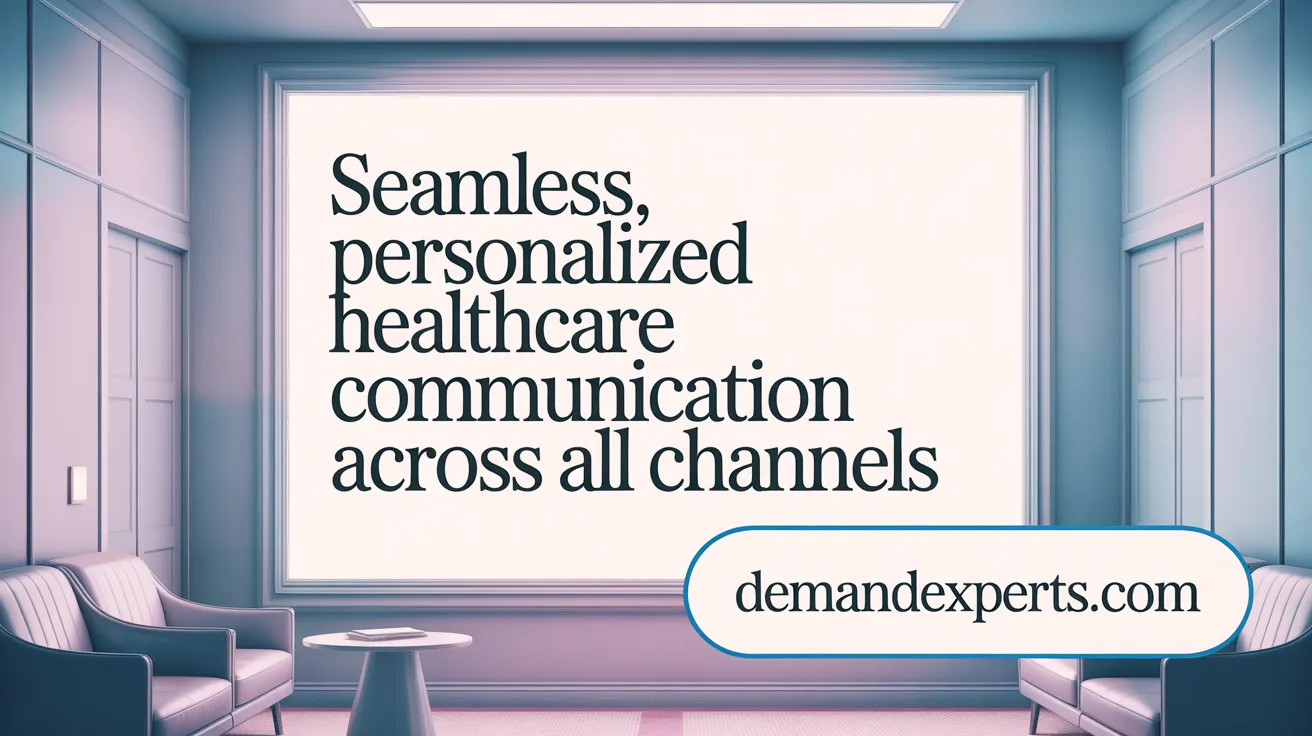
What is the importance of omnichannel marketing in healthcare?
Omnichannel marketing in healthcare brings together multiple communication methods—including websites, social media, email campaigns, mobile apps, and secure messaging platforms. This integration creates a seamless and consistent experience tailored to individual patient preferences. Patients today expect to interact with healthcare providers through their preferred channels, and providing these options fosters stronger patient-provider relationships and boosts engagement (Effective Digital Marketing in Healthcare, Omnichannel Patient Communication).
How does omnichannel communication impact patient satisfaction?
With omnichannel strategies, healthcare organizations deliver personalized and timely information accessible across all digital touchpoints. Such consistency improves convenience and increases patient trust by ensuring patients feel supported throughout every phase of their healthcare journey. This approach can lead to higher treatment adherence, increased loyalty, and better overall health outcomes (Patient Engagement in Healthcare, Patient Engagement Overview).
Multi-platform marketing strategies
Employing diverse platforms optimizes the reach and effectiveness of healthcare communication. Combining social media engagement, email newsletters, mobile health apps, and patient portals allows providers to meet patients where they are. This multi-channel approach also facilitates continuous outreach and feedback loops, vital for nurturing long-term patient relationships (Digital Marketing in Healthcare, Social Media in Healthcare, Multi-channel Patient Engagement).
Consistency in messaging
Maintaining uniform messaging across platforms promotes clarity and reinforces brand credibility. Patients receive coherent health information and care instructions regardless of whether they visit a website, check social media, or receive an email. This consistency is critical for enhancing patient understanding and reducing confusion throughout their care experience (Healthcare Marketing Strategies, Content Strategy in Healthcare Marketing).
Secure messaging and personalization
Using secure messaging tools ensures patient privacy while enabling personalized communication. Tailoring messages based on patient data and behavioral insights increases relevance and responsiveness. Moreover, adherence to regulations like HIPAA protects patient information, building confidence in digital interactions (HIPAA Compliance in Marketing, Personalized Healthcare Marketing).
Improving patient experience
An omnichannel approach elevates the patient experience by facilitating easier access to health services, appointment scheduling, reminders, and educational resources. Patients benefit from convenience and continuous engagement, empowering them to actively participate in their health management (Patient Engagement Benefits, Enhancing Patient Experience).
| Aspect | Description | Impact |
|---|---|---|
| Omnichannel Integration | Multiple channels working cohesively | Seamless patient experience |
| Personalization | Tailored messaging using patient data | Increased trust and loyalty |
| Consistent Messaging | Uniform communication across all platforms | Improved patient understanding |
| Secure Messaging | Privacy-compliant patient communication | Enhanced patient confidence |
| Multi-Platform Strategy | Utilization of web, social, email, apps | Broader reach and patient engagement |
| Patient Experience Benefits | Convenience, support, accessibility | Higher satisfaction and better health outcomes |
Harnessing Artificial Intelligence and Conversation Intelligence in Healthcare Marketing
How is AI transforming healthcare digital marketing?
Artificial intelligence (AI) is revolutionizing healthcare marketing by enabling providers to analyze large volumes of patient data and extract meaningful audience insights. AI-powered tools enable personalized healthcare marketing, tailoring marketing messages to individual patient preferences and health needs. Moreover, AI systems optimize campaigns in real-time, adjusting strategies based on performance metrics to improve patient outreach and engagement.
One standout application is AI-driven automation, such as chatbots for healthcare that handle appointment scheduling, answer patient queries, and provide health information 24/7. This streamlines communication, reduces staff workload, and enhances patient experience. AI's ability to comply with regulatory standards like HIPAA compliance in digital marketing ensures privacy and trust remain central to marketing efforts.
What is conversation intelligence and its role in healthcare marketing?
Conversation intelligence involves analyzing patient conversations across multiple channels—phone calls, chats, emails—to extract actionable data that improves healthcare marketing. By tracking interaction patterns, it provides insights into patient needs, treatment preferences, and feedback that help tailor marketing messages effectively.
These tools support campaign evaluation by measuring response rates and identifying which communication methods generate the highest conversions. Healthcare providers use this intelligence to refine audience targeting, improve customer service quality, and boost patient acquisition rates. Crucially, conversation intelligence platforms are designed to comply with healthcare privacy laws, safeguarding patient information.
Key applications of AI and conversation intelligence in healthcare marketing
- Predictive Analytics: Leveraging patient data to anticipate healthcare needs, enabling proactive engagement and personalized outreach that improves adherence and outcomes. (Behavioral Targeting in Healthcare)
- Chatbots and Automation: Providing instant responses to patient inquiries, streamlining appointment bookings, and offering tailored health advice digitally. (AI-Powered Patient Engagement Tools)
- Marketing Optimization: Utilizing real-time data and AI insights to fine-tune campaigns for better effectiveness, reducing costs and increasing patient engagement. (Healthcare marketing strategies)
These technologies are transforming healthcare marketing into a data-driven, patient-centric practice that fosters trust, enhances communication, and supports better health outcomes.
Building Trust and Reputation through Online Reviews and Social Proof

Why is managing online reputation crucial for healthcare providers?
Managing online reputation is vital in healthcare because patients trust online reviews as much as personal recommendations. Proactive reputation management builds trust and credibility, which are essential for attracting and retaining patients. Positive reviews not only enhance brand perception but also increase patient acquisition by influencing healthcare decisions. Conversely, addressing negative feedback transparently protects a provider’s reputation and encourages ongoing patient engagement.
Patient Reviews Impact and Social Proof in Healthcare
Patient reviews serve as powerful social proof that can significantly sway prospective patients’ choices. Social proof in healthcare involves leveraging testimonials, patient stories, and online ratings to establish authority and build confidence among new and existing patients. When patients see authentic feedback from peers, they are more likely to trust the provider’s expertise and feel reassured about the quality of care.
Ethical Considerations in Review Solicitation
Ethics play a crucial role in how healthcare providers solicit and use patient reviews. Providers must comply with HIPAA regulations in digital marketing to safeguard patient confidentiality, ensuring no private health information is disclosed without consent. Honest, voluntary feedback should be encouraged without pressuring patients. Transparency in how reviews are collected and used fosters trust and respects patient privacy rights.
Review Solicitation Strategies
Effective strategies include requesting reviews shortly after appointments via secure communication channels, like patient portals or email, emphasizing the importance of honest feedback. Healthcare organizations should incorporate these reviews in marketing materials responsibly, such as sharing anonymized testimonials and case studies, which enhance social proof. Continuous monitoring of reviews coupled with prompt responses to concerns demonstrates commitment to quality care and improves patient relationships.
Overall, building and maintaining a trustworthy online reputation through ethical review management and strategic use of social proof is essential in today’s digitally driven healthcare environment. This approach not only strengthens patient-provider relationships but also supports long-term engagement and organizational growth.
Integrating Telehealth and Remote Monitoring into Digital Engagement Strategies
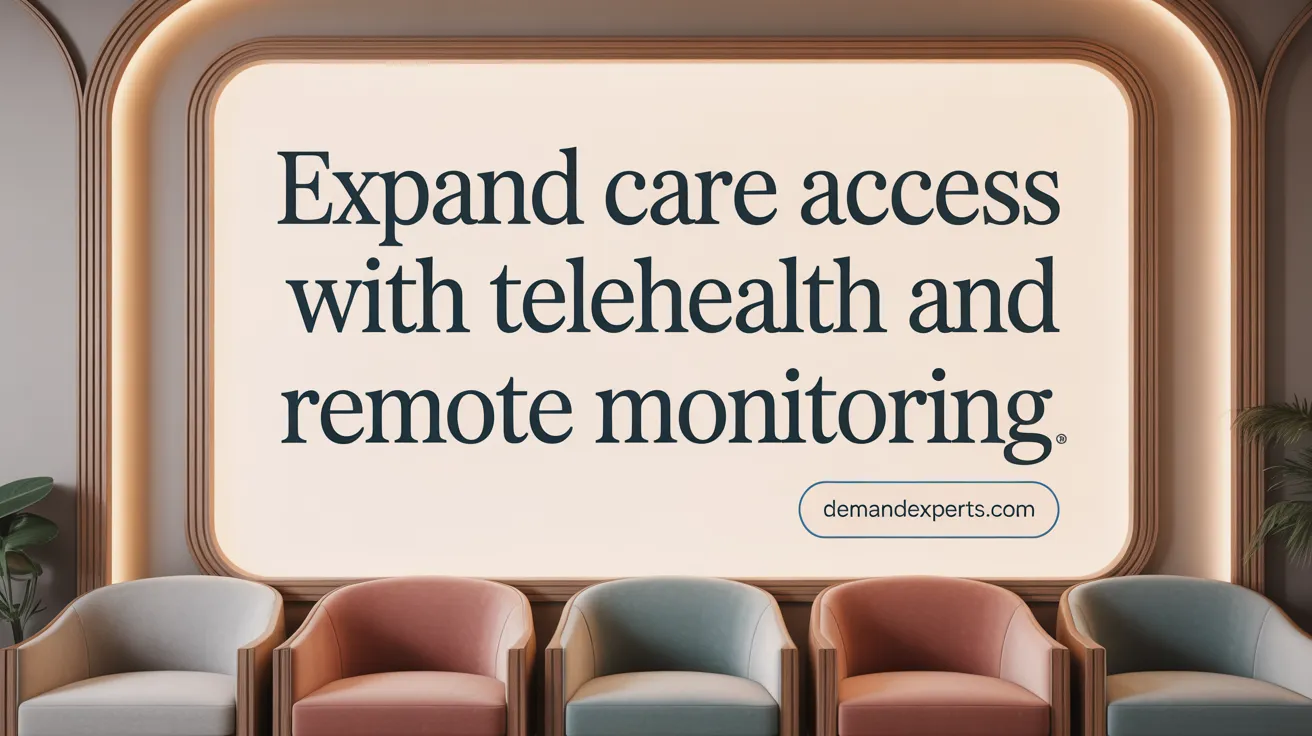
How do telehealth and remote monitoring enhance patient engagement?
Telehealth and remote patient monitoring tools break the barriers of traditional healthcare by expanding access and offering care continuity from any location. These digital tools facilitate real-time communication and health status updates, empowering patients to actively participate in managing chronic conditions and preventive care. By promoting telehealth and remote monitoring benefits through digital marketing strategies, healthcare providers increase patient awareness and encourage utilization. This not only supports adherence to treatment plans but also improves health literacy with educational resources and reminders. Early detection of health issues through remote monitoring enables timely interventions, further enhancing patient outcomes and engagement.
What are effective digital strategies to market telehealth services?
Successful telehealth marketing strategies leverage a blend of digital channels and content formats. Educational videos explaining how telehealth works and addressing patient concerns can increase trust and conversion rates. Social media campaigns targeted to specific demographics help raise awareness while emphasizing the safety and convenience of virtual visits. Online appointment scheduling platforms integrated with telehealth services streamline the patient journey, minimizing friction in user experience. Personalized email campaigns provide timely reminders and informational updates, engaging patients at every stage of care. Highlighting ease of access and continuous care benefits resonates with tech-savvy users and expands reach to underserved populations, improving overall patient satisfaction and retention through effective digital marketing in healthcare.
Improving Access and Convenience Through Digital Patient Engagement Tools
Telehealth combined with remote monitoring is supported by digital engagement tools such as mobile health apps, patient portals, and automated messaging. These tools facilitate ongoing communication, appointment reminders, medication alerts, and patient education, crucial for post-care engagement and proactive reputation management. Together, these strategies create a seamless omnichannel healthcare experience where patients can manage appointments, communicate with providers, and monitor their health conveniently, fostering higher engagement and better health outcomes.
Using Data Analytics to Measure and Optimize Patient Engagement Campaigns
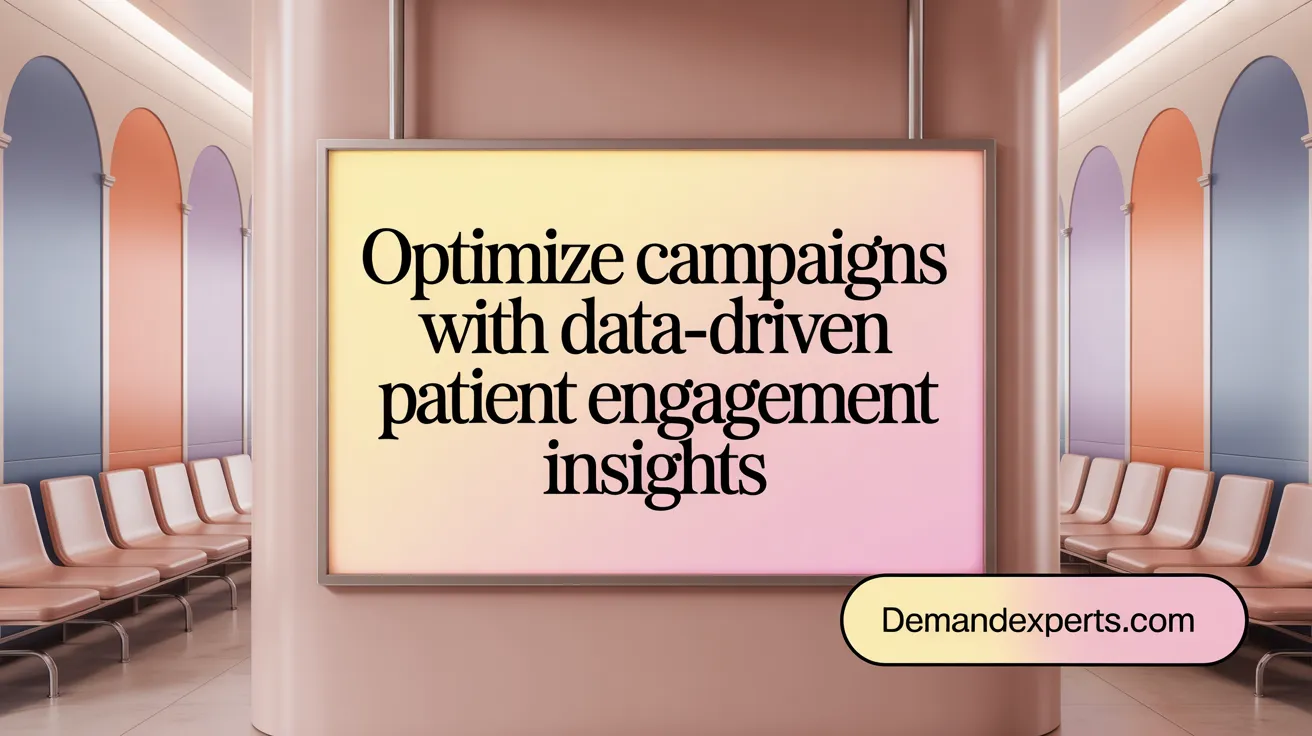
Why is data analytics vital for healthcare marketing effectiveness?
Data analytics plays a crucial role in healthcare marketing by providing deep insights into patient behaviors, preferences, and how campaigns perform. This enables marketers to tailor strategies more precisely, improving targeting and maximizing the return on investment (ROI). Key performance indicators (KPIs) such as engagement rates, conversion rates, and patient satisfaction scores are carefully tracked. These metrics help refine marketing efforts continually to ensure campaigns resonate with patients and foster stronger engagement.
How do healthcare marketers balance analytics with HIPAA compliance?
Healthcare marketers use analytics tools designed to comply with HIPAA regulations, ensuring patient data privacy and security. These tools anonymize sensitive information and prioritize first-party and zero-party data collection, which limits exposure of protected health information. Privacy-preserving techniques like IP address masking and secure data storage help maintain confidentiality. By employing these methods, marketers gain valuable campaign insights while upholding ethical standards and legal requirements.
Key components of data-driven marketing in healthcare
- Patient Segmentation: Grouping patients based on behaviors and health conditions enables personalized messaging.
- Measurement of Engagement: Tracking interactions such as website visits, email opens, and appointment bookings to assess campaign impact.
- ROI Analysis: Calculating the financial return of marketing initiatives to guide budget allocation.
Analytics tools commonly used include
| Tool Type | Purpose | HIPAA Compliance Feature |
|---|---|---|
| Customer Relationship Management (CRM) | Manage patient data and interactions | Data encryption, access controls |
| Marketing Automation | Automate campaigns and track performance | Anonymized data processing |
| Web Analytics | Analyze website traffic and user behavior | IP masking, opt-in consent features |
| Conversation Intelligence | Analyze call and chat data for insights | Secure handling of voice data |
Embracing continuous improvement
Healthcare marketing is an evolving field where continuous monitoring of campaigns via analytics fosters ongoing optimization. By leveraging data, healthcare providers can identify what works best, adapt quickly to patient needs, and consistently enhance engagement strategies. This cyclical improvement ensures higher patient satisfaction, more effective communication, and ultimately, better health outcomes.
Community Building and Influencer Partnerships for Enhanced Patient Engagement
How do digital communities contribute to healthcare patient engagement?
Creating and nurturing digital health communities via social media groups, forums, and wellness workshops plays a vital role in patient engagement. These platforms act as spaces where patients can share experiences, receive emotional support, and learn from peers.
Such communities promote continuous interaction beyond traditional clinical visits, fostering motivation and improving health literacy through the sharing of educational content. They also help strengthen trust between providers and patients, as ongoing engagement creates a sense of belonging and reassurance.
Hospitals and healthcare organizations use these digital communities to facilitate connections that empower patients in managing chronic diseases and adopting healthier lifestyles, ultimately enhancing outcomes and satisfaction.
What role do influencers and testimonials play in healthcare marketing?
Influencer marketing in healthcare helps extend the reach of trusted health messages. Partnering with health and wellness influencers offers healthcare brands relatable advocates who can authentically communicate key information to targeted audiences.
Complementing influencer efforts, patient testimonials provide genuine stories of successful care experiences, which build credibility and reduce skepticism about treatment options.
Together, influencers and testimonials deepen trust, increase brand visibility, and encourage patient participation by showcasing authentic voices and outcomes.
Additional strategies for community and engagement
- Online Support Groups: Provide safe, private spaces for specific health conditions, encouraging peer discussion and shared self-management tips.
- Wellness Events: Hosting virtual or local wellness workshops and educational seminars offers interactive learning and fosters community relationships.
- User-Generated Content: Encouraging patients to share their journey inspires others and strengthens emotional connections.
By integrating these digital and community-driven approaches, healthcare organizations can enhance patient engagement, creating an empowering ecosystem centered on support, education, and authentic connection.
Ensuring Compliance and Ethical Practices in Healthcare Digital Marketing
What compliance challenges do healthcare marketers face in digital marketing?
Healthcare marketers encounter complex regulatory landscapes that demand strict adherence to HIPAA compliance in healthcare marketing, FDA in healthcare marketing, and GDPR requirements. Ensuring the security and confidentiality of patient information while conducting personalized digital campaigns is paramount. They must carefully balance customization with privacy by obtaining explicit patient consent, anonymizing sensitive data, and implementing compliant communication tactics. These measures help prevent breaches of trust and legal repercussions.
Why is ethical marketing critical for patient engagement in healthcare?
Ethical marketing is foundational in fostering patient trust, enhancing credibility, and building enduring relationships. It ensures all messaging is truthful, respects patient autonomy, and safeguards confidentiality. Transparency about how patient data is collected and used differentiates healthcare marketing from general advertising practices and reinforces patient confidence. This honesty supports better patient involvement and helps achieve improved health outcomes.
Key Aspects of Ethical and Compliant Healthcare Marketing
- Transparency and Trust: Open communication about data handling builds patient loyalty and reassures users about privacy.
- Patient Data Security: Utilizing HIPAA-compliant tools and anonymization techniques protects patient information from unauthorized access.
- Regulatory Challenges: Staying updated on evolving healthcare laws requires ongoing attention and dedicated resources.
By addressing these compliance and ethical dimensions, healthcare marketers can confidently engage patients while maintaining legal and moral integrity.
The Future of Patient Engagement Through Digital Innovation
Innovative digital marketing strategies are redefining patient engagement in healthcare by emphasizing personalization, technology integration, patient education, and ethical communication. As providers adopt AI-driven tools, omnichannel approaches, and immersive content, they cultivate stronger patient relationships, improve health outcomes, and enhance satisfaction. The convergence of data analytics, behavioral insights, and digital communities heralds a patient-centric era where engagement extends beyond traditional care settings. Upholding compliance and trust remain fundamental in this evolving landscape, ensuring that advancements serve patients' best interests. Healthcare marketers poised to embrace these innovations will lead the transformation toward accessible, informed, and empowered patient experiences in the years ahead.
Understanding the Digital Shift in Healthcare Engagement
The healthcare sector is undergoing a profound transformation driven by digital marketing innovations that enhance patient engagement. As the industry's footprint rapidly expands with increasing demands for more personalized, accessible, and effective health communication, providers are embracing digital tools to foster trusted patient relationships and improve health outcomes. This article explores the pioneering digital marketing strategies that are redefining patient engagement in healthcare and the vital role of technology in shaping patient-centric care today.
The Imperative of Digital Presence in Patient Engagement
Why is digital presence critical for patient engagement?
A strong digital presence is vital in today’s healthcare environment. With 77% of patients researching online before scheduling an appointment, healthcare providers must ensure their information is easily accessible and engaging. Search engines drive three times more visitors to hospital websites than other sources, highlighting the need for optimized digital content. Local search optimization helps patients find nearby providers quickly, and mobile-first website design caters to the majority who access healthcare information via smartphones. Together, these strategies enhance patient decision-making and satisfaction by providing up-to-date, convenient information.
How do social media platforms affect patient engagement?
Social media plays a significant role in shaping patient perceptions and actions. Around 57% of patients report being influenced by social media when making treatment decisions. Platforms like Facebook, Instagram, Twitter, and LinkedIn provide healthcare organizations with tools to build awareness, establish authority, and foster trust. Social media also allows for real-time interaction, where healthcare providers can respond promptly to patient concerns, gather feedback, and deliver tailored content that resonates with different audience segments. This dynamic engagement strengthens patient-provider relationships and encourages loyalty.
The role of SEO and local search optimization
SEO is crucial for making healthcare providers discoverable online. Optimizing website content with relevant keywords, meta descriptions, and local search terms improves visibility in search engine results, especially when patients seek nearby healthcare services. Including quick links, clear calls-to-action, and contact information further reduces barriers to engagement. These strategies are vital for healthcare marketing growth and patient engagement.
Mobile-first website design for healthcare
Over 80% of patients use smartphones to find healthcare information, making mobile-friendly design indispensable. Responsive websites with fast loading times and intuitive navigation improve user experience, decrease bounce rates, and increase the likelihood of scheduling appointments. This approach aligns with best practices in healthcare digital marketing.
Integrating these digital marketing elements
Healthcare organizations that combine SEO, local search optimization, mobile-friendly websites, and active social media presence create a seamless digital experience. This comprehensive approach not only attracts patients but also builds lasting relationships by meeting their needs where they are—online and on mobile devices. It reflects effective digital marketing strategies focused on boosting patient engagement and satisfaction.
Personalization and Behavioral Targeting: The Heart of Modern Healthcare Marketing
How does personalization improve patient engagement in healthcare marketing?
Personalization is a transformative tool in healthcare digital marketing, enhancing patient engagement by delivering tailored digital experiences. Using patient demographics, psychographics, and social determinants of health, healthcare marketers segment their audience to craft messages that resonate personally. This strategy increases interaction rates and builds more substantial patient loyalty and trust. When patients receive content that speaks directly to their unique needs and preferences, they are more likely to adhere to treatment plans and remain satisfied with their healthcare providers.
What role does behavioral targeting play in healthcare engagement?
Behavioral targeting in healthcare collects data from patient interactions such as website clicks, email opens, landing page views, and online form submissions. Analyzing this data enables marketers to provide timely and relevant information, including medication reminders and condition-specific education. This targeted approach not only improves health outcomes by encouraging preventive care but also strengthens patient-provider relationships. Importantly, these practices adhere strictly to HIPAA compliance in marketing, ensuring ethical and compliant marketing.
The Power of Segmentation Strategies
Segmentation divides patients into groups based on varied criteria like age, health conditions, and behavioral patterns. This strategy allows healthcare campaigns to focus their messaging and outreach measuredly, improving the relevance and effectiveness of marketing efforts. Segmentation facilitates patient-centric communication that acknowledges individual health journeys, ultimately contributing to higher engagement and satisfaction.
How are AI and Predictive Analytics Changing the Landscape?
Artificial intelligence and predictive analytics enable healthcare marketers to analyze vast datasets to predict patient needs and preferences. AI tools help customize outreach campaigns in real-time, optimizing message timing and content. This intelligent personalization maximizes campaign performance while simplifying complex data into actionable insights, helping providers deliver meaningful patient experiences. For insights on AI-powered patient engagement tools and predictive analytics in healthcare, see these resources.
Patient Loyalty and Trust through Tailored Engagement
Continuous personalized communication fosters an ongoing relationship between patients and healthcare providers. By integrating behavioral insights and segmentation, healthcare marketing strengthens trust, encourages repeat engagements, and builds lifelong loyalty. This patient-first approach not only benefits health outcomes but also supports healthcare organizations in achieving sustainable growth through improved satisfaction and retention. Learn more about building healthcare authority and reputation and trust building in healthcare to deepen patient loyalty.
Leveraging Video and Content Marketing to Educate and Engage Patients

Why is video marketing effective in healthcare patient engagement?
Video marketing in healthcare stands out as a highly effective channel in healthcare due to its ability to increase patient engagement and conversion rates by up to 80%. Videos excel at simplifying complex medical information through formats such as patient testimonials and case studies, educational webinars, and virtual facility tours. This approach humanizes healthcare providers and creates an emotional connection with viewers. Additionally, video content boosts search engine optimization (SEO) by increasing time spent on pages and enhancing site rankings, making healthcare providers more discoverable online.
How does content marketing foster patient engagement?
Content marketing in healthcare plays a crucial role in educating and involving patients by delivering trustworthy, high-quality information through various mediums like blogs, articles, infographics, and social media posts. This strategy elevates providers as authoritative sources while enhancing patient health literacy. By offering personalized and accessible content tailored to patient needs, healthcare organizations support informed decision-making and promote ongoing engagement. Such resources also help answer pressing patient questions, driving sustained organic traffic and improving patient retention.
Strategies for patient education and trust-building
Effective patient education relies on delivering relevant, easy-to-understand content that empowers individuals to take an active role in their care. Combining video storytelling with comprehensive written materials fosters trust and helps patients feel more confident in their healthcare choices. Incorporating testimonials and interactive webinars further deepens engagement by encouraging dialogue and community support.
SEO impact of video content
Videos not only educate but also significantly enhance SEO performance. Search engines favor video-rich pages, which tend to keep visitors on a site longer and reduce bounce rates. Optimizing videos with targeted keywords, compelling titles, and accurate descriptions ensures they reach the right audience. This dual benefit supports both patient education goals and the visibility of healthcare services online, attracting new patients and reinforcing provider credibility.
By integrating video and content marketing thoughtfully, healthcare providers can build stronger connections, educate effectively, and foster long-term patient engagement.
The Rise of Omnichannel Marketing in Healthcare Communications

What is the importance of omnichannel marketing in healthcare?
Omnichannel marketing in healthcare brings together multiple communication methods—including websites, social media, email campaigns, mobile apps, and secure messaging platforms. This integration creates a seamless and consistent experience tailored to individual patient preferences. Patients today expect to interact with healthcare providers through their preferred channels, and providing these options fosters stronger patient-provider relationships and boosts engagement (Effective Digital Marketing in Healthcare, Omnichannel Patient Communication).
How does omnichannel communication impact patient satisfaction?
With omnichannel strategies, healthcare organizations deliver personalized and timely information accessible across all digital touchpoints. Such consistency improves convenience and increases patient trust by ensuring patients feel supported throughout every phase of their healthcare journey. This approach can lead to higher treatment adherence, increased loyalty, and better overall health outcomes (Patient Engagement in Healthcare, Patient Engagement Overview).
Multi-platform marketing strategies
Employing diverse platforms optimizes the reach and effectiveness of healthcare communication. Combining social media engagement, email newsletters, mobile health apps, and patient portals allows providers to meet patients where they are. This multi-channel approach also facilitates continuous outreach and feedback loops, vital for nurturing long-term patient relationships (Digital Marketing in Healthcare, Social Media in Healthcare, Multi-channel Patient Engagement).
Consistency in messaging
Maintaining uniform messaging across platforms promotes clarity and reinforces brand credibility. Patients receive coherent health information and care instructions regardless of whether they visit a website, check social media, or receive an email. This consistency is critical for enhancing patient understanding and reducing confusion throughout their care experience (Healthcare Marketing Strategies, Content Strategy in Healthcare Marketing).
Secure messaging and personalization
Using secure messaging tools ensures patient privacy while enabling personalized communication. Tailoring messages based on patient data and behavioral insights increases relevance and responsiveness. Moreover, adherence to regulations like HIPAA protects patient information, building confidence in digital interactions (HIPAA Compliance in Marketing, Personalized Healthcare Marketing).
Improving patient experience
An omnichannel approach elevates the patient experience by facilitating easier access to health services, appointment scheduling, reminders, and educational resources. Patients benefit from convenience and continuous engagement, empowering them to actively participate in their health management (Patient Engagement Benefits, Enhancing Patient Experience).
| Aspect | Description | Impact |
|---|---|---|
| Omnichannel Integration | Multiple channels working cohesively | Seamless patient experience |
| Personalization | Tailored messaging using patient data | Increased trust and loyalty |
| Consistent Messaging | Uniform communication across all platforms | Improved patient understanding |
| Secure Messaging | Privacy-compliant patient communication | Enhanced patient confidence |
| Multi-Platform Strategy | Utilization of web, social, email, apps | Broader reach and patient engagement |
| Patient Experience Benefits | Convenience, support, accessibility | Higher satisfaction and better health outcomes |
Harnessing Artificial Intelligence and Conversation Intelligence in Healthcare Marketing
How is AI transforming healthcare digital marketing?
Artificial intelligence (AI) is revolutionizing healthcare marketing by enabling providers to analyze large volumes of patient data and extract meaningful audience insights. AI-powered tools enable personalized healthcare marketing, tailoring marketing messages to individual patient preferences and health needs. Moreover, AI systems optimize campaigns in real-time, adjusting strategies based on performance metrics to improve patient outreach and engagement.
One standout application is AI-driven automation, such as chatbots for healthcare that handle appointment scheduling, answer patient queries, and provide health information 24/7. This streamlines communication, reduces staff workload, and enhances patient experience. AI's ability to comply with regulatory standards like HIPAA compliance in digital marketing ensures privacy and trust remain central to marketing efforts.
What is conversation intelligence and its role in healthcare marketing?
Conversation intelligence involves analyzing patient conversations across multiple channels—phone calls, chats, emails—to extract actionable data that improves healthcare marketing. By tracking interaction patterns, it provides insights into patient needs, treatment preferences, and feedback that help tailor marketing messages effectively.
These tools support campaign evaluation by measuring response rates and identifying which communication methods generate the highest conversions. Healthcare providers use this intelligence to refine audience targeting, improve customer service quality, and boost patient acquisition rates. Crucially, conversation intelligence platforms are designed to comply with healthcare privacy laws, safeguarding patient information.
Key applications of AI and conversation intelligence in healthcare marketing
- Predictive Analytics: Leveraging patient data to anticipate healthcare needs, enabling proactive engagement and personalized outreach that improves adherence and outcomes. (Behavioral Targeting in Healthcare)
- Chatbots and Automation: Providing instant responses to patient inquiries, streamlining appointment bookings, and offering tailored health advice digitally. (AI-Powered Patient Engagement Tools)
- Marketing Optimization: Utilizing real-time data and AI insights to fine-tune campaigns for better effectiveness, reducing costs and increasing patient engagement. (Healthcare marketing strategies)
These technologies are transforming healthcare marketing into a data-driven, patient-centric practice that fosters trust, enhances communication, and supports better health outcomes.
Building Trust and Reputation through Online Reviews and Social Proof

Why is managing online reputation crucial for healthcare providers?
Managing online reputation is vital in healthcare because patients trust online reviews as much as personal recommendations. Proactive reputation management builds trust and credibility, which are essential for attracting and retaining patients. Positive reviews not only enhance brand perception but also increase patient acquisition by influencing healthcare decisions. Conversely, addressing negative feedback transparently protects a provider’s reputation and encourages ongoing patient engagement.
Patient Reviews Impact and Social Proof in Healthcare
Patient reviews serve as powerful social proof that can significantly sway prospective patients’ choices. Social proof in healthcare involves leveraging testimonials, patient stories, and online ratings to establish authority and build confidence among new and existing patients. When patients see authentic feedback from peers, they are more likely to trust the provider’s expertise and feel reassured about the quality of care.
Ethical Considerations in Review Solicitation
Ethics play a crucial role in how healthcare providers solicit and use patient reviews. Providers must comply with HIPAA regulations in digital marketing to safeguard patient confidentiality, ensuring no private health information is disclosed without consent. Honest, voluntary feedback should be encouraged without pressuring patients. Transparency in how reviews are collected and used fosters trust and respects patient privacy rights.
Review Solicitation Strategies
Effective strategies include requesting reviews shortly after appointments via secure communication channels, like patient portals or email, emphasizing the importance of honest feedback. Healthcare organizations should incorporate these reviews in marketing materials responsibly, such as sharing anonymized testimonials and case studies, which enhance social proof. Continuous monitoring of reviews coupled with prompt responses to concerns demonstrates commitment to quality care and improves patient relationships.
Overall, building and maintaining a trustworthy online reputation through ethical review management and strategic use of social proof is essential in today’s digitally driven healthcare environment. This approach not only strengthens patient-provider relationships but also supports long-term engagement and organizational growth.
Integrating Telehealth and Remote Monitoring into Digital Engagement Strategies

How do telehealth and remote monitoring enhance patient engagement?
Telehealth and remote patient monitoring tools break the barriers of traditional healthcare by expanding access and offering care continuity from any location. These digital tools facilitate real-time communication and health status updates, empowering patients to actively participate in managing chronic conditions and preventive care. By promoting telehealth and remote monitoring benefits through digital marketing strategies, healthcare providers increase patient awareness and encourage utilization. This not only supports adherence to treatment plans but also improves health literacy with educational resources and reminders. Early detection of health issues through remote monitoring enables timely interventions, further enhancing patient outcomes and engagement.
What are effective digital strategies to market telehealth services?
Successful telehealth marketing strategies leverage a blend of digital channels and content formats. Educational videos explaining how telehealth works and addressing patient concerns can increase trust and conversion rates. Social media campaigns targeted to specific demographics help raise awareness while emphasizing the safety and convenience of virtual visits. Online appointment scheduling platforms integrated with telehealth services streamline the patient journey, minimizing friction in user experience. Personalized email campaigns provide timely reminders and informational updates, engaging patients at every stage of care. Highlighting ease of access and continuous care benefits resonates with tech-savvy users and expands reach to underserved populations, improving overall patient satisfaction and retention through effective digital marketing in healthcare.
Improving Access and Convenience Through Digital Patient Engagement Tools
Telehealth combined with remote monitoring is supported by digital engagement tools such as mobile health apps, patient portals, and automated messaging. These tools facilitate ongoing communication, appointment reminders, medication alerts, and patient education, crucial for post-care engagement and proactive reputation management. Together, these strategies create a seamless omnichannel healthcare experience where patients can manage appointments, communicate with providers, and monitor their health conveniently, fostering higher engagement and better health outcomes.
Using Data Analytics to Measure and Optimize Patient Engagement Campaigns

Why is data analytics vital for healthcare marketing effectiveness?
Data analytics plays a crucial role in healthcare marketing by providing deep insights into patient behaviors, preferences, and how campaigns perform. This enables marketers to tailor strategies more precisely, improving targeting and maximizing the return on investment (ROI). Key performance indicators (KPIs) such as engagement rates, conversion rates, and patient satisfaction scores are carefully tracked. These metrics help refine marketing efforts continually to ensure campaigns resonate with patients and foster stronger engagement.
How do healthcare marketers balance analytics with HIPAA compliance?
Healthcare marketers use analytics tools designed to comply with HIPAA regulations, ensuring patient data privacy and security. These tools anonymize sensitive information and prioritize first-party and zero-party data collection, which limits exposure of protected health information. Privacy-preserving techniques like IP address masking and secure data storage help maintain confidentiality. By employing these methods, marketers gain valuable campaign insights while upholding ethical standards and legal requirements.
Key components of data-driven marketing in healthcare
- Patient Segmentation: Grouping patients based on behaviors and health conditions enables personalized messaging.
- Measurement of Engagement: Tracking interactions such as website visits, email opens, and appointment bookings to assess campaign impact.
- ROI Analysis: Calculating the financial return of marketing initiatives to guide budget allocation.
Analytics tools commonly used include
| Tool Type | Purpose | HIPAA Compliance Feature |
|---|---|---|
| Customer Relationship Management (CRM) | Manage patient data and interactions | Data encryption, access controls |
| Marketing Automation | Automate campaigns and track performance | Anonymized data processing |
| Web Analytics | Analyze website traffic and user behavior | IP masking, opt-in consent features |
| Conversation Intelligence | Analyze call and chat data for insights | Secure handling of voice data |
Embracing continuous improvement
Healthcare marketing is an evolving field where continuous monitoring of campaigns via analytics fosters ongoing optimization. By leveraging data, healthcare providers can identify what works best, adapt quickly to patient needs, and consistently enhance engagement strategies. This cyclical improvement ensures higher patient satisfaction, more effective communication, and ultimately, better health outcomes.
Community Building and Influencer Partnerships for Enhanced Patient Engagement
How do digital communities contribute to healthcare patient engagement?
Creating and nurturing digital health communities via social media groups, forums, and wellness workshops plays a vital role in patient engagement. These platforms act as spaces where patients can share experiences, receive emotional support, and learn from peers.
Such communities promote continuous interaction beyond traditional clinical visits, fostering motivation and improving health literacy through the sharing of educational content. They also help strengthen trust between providers and patients, as ongoing engagement creates a sense of belonging and reassurance.
Hospitals and healthcare organizations use these digital communities to facilitate connections that empower patients in managing chronic diseases and adopting healthier lifestyles, ultimately enhancing outcomes and satisfaction.
What role do influencers and testimonials play in healthcare marketing?
Influencer marketing in healthcare helps extend the reach of trusted health messages. Partnering with health and wellness influencers offers healthcare brands relatable advocates who can authentically communicate key information to targeted audiences.
Complementing influencer efforts, patient testimonials provide genuine stories of successful care experiences, which build credibility and reduce skepticism about treatment options.
Together, influencers and testimonials deepen trust, increase brand visibility, and encourage patient participation by showcasing authentic voices and outcomes.
Additional strategies for community and engagement
- Online Support Groups: Provide safe, private spaces for specific health conditions, encouraging peer discussion and shared self-management tips.
- Wellness Events: Hosting virtual or local wellness workshops and educational seminars offers interactive learning and fosters community relationships.
- User-Generated Content: Encouraging patients to share their journey inspires others and strengthens emotional connections.
By integrating these digital and community-driven approaches, healthcare organizations can enhance patient engagement, creating an empowering ecosystem centered on support, education, and authentic connection.
Ensuring Compliance and Ethical Practices in Healthcare Digital Marketing
What compliance challenges do healthcare marketers face in digital marketing?
Healthcare marketers encounter complex regulatory landscapes that demand strict adherence to HIPAA compliance in healthcare marketing, FDA in healthcare marketing, and GDPR requirements. Ensuring the security and confidentiality of patient information while conducting personalized digital campaigns is paramount. They must carefully balance customization with privacy by obtaining explicit patient consent, anonymizing sensitive data, and implementing compliant communication tactics. These measures help prevent breaches of trust and legal repercussions.
Why is ethical marketing critical for patient engagement in healthcare?
Ethical marketing is foundational in fostering patient trust, enhancing credibility, and building enduring relationships. It ensures all messaging is truthful, respects patient autonomy, and safeguards confidentiality. Transparency about how patient data is collected and used differentiates healthcare marketing from general advertising practices and reinforces patient confidence. This honesty supports better patient involvement and helps achieve improved health outcomes.
Key Aspects of Ethical and Compliant Healthcare Marketing
- Transparency and Trust: Open communication about data handling builds patient loyalty and reassures users about privacy.
- Patient Data Security: Utilizing HIPAA-compliant tools and anonymization techniques protects patient information from unauthorized access.
- Regulatory Challenges: Staying updated on evolving healthcare laws requires ongoing attention and dedicated resources.
By addressing these compliance and ethical dimensions, healthcare marketers can confidently engage patients while maintaining legal and moral integrity.
The Future of Patient Engagement Through Digital Innovation
Innovative digital marketing strategies are redefining patient engagement in healthcare by emphasizing personalization, technology integration, patient education, and ethical communication. As providers adopt AI-driven tools, omnichannel approaches, and immersive content, they cultivate stronger patient relationships, improve health outcomes, and enhance satisfaction. The convergence of data analytics, behavioral insights, and digital communities heralds a patient-centric era where engagement extends beyond traditional care settings. Upholding compliance and trust remain fundamental in this evolving landscape, ensuring that advancements serve patients' best interests. Healthcare marketers poised to embrace these innovations will lead the transformation toward accessible, informed, and empowered patient experiences in the years ahead.



